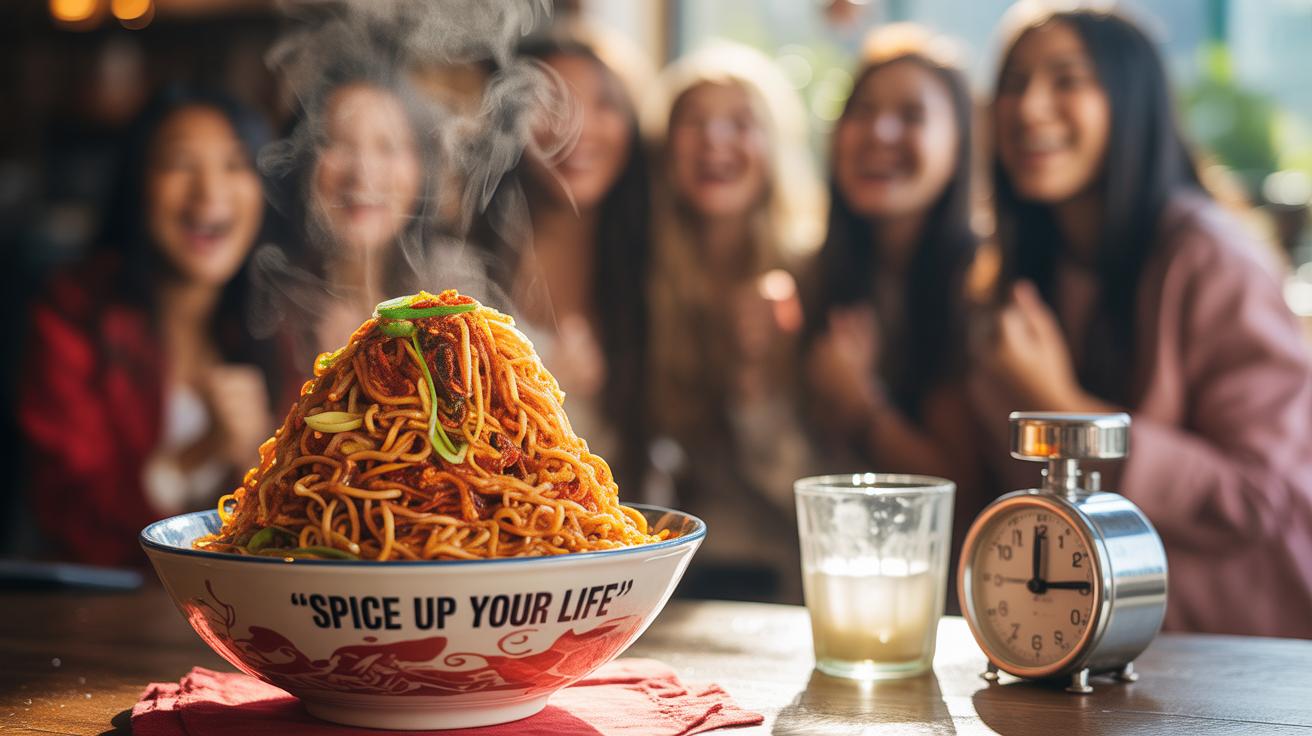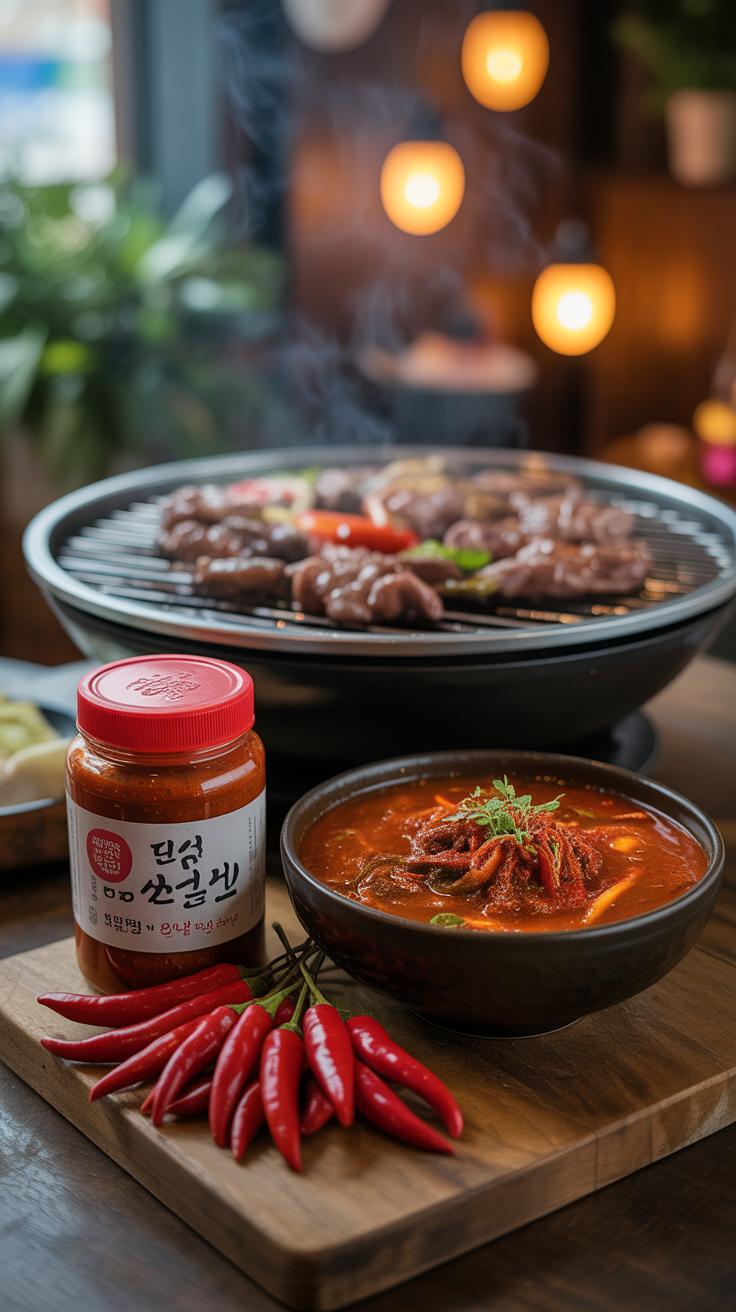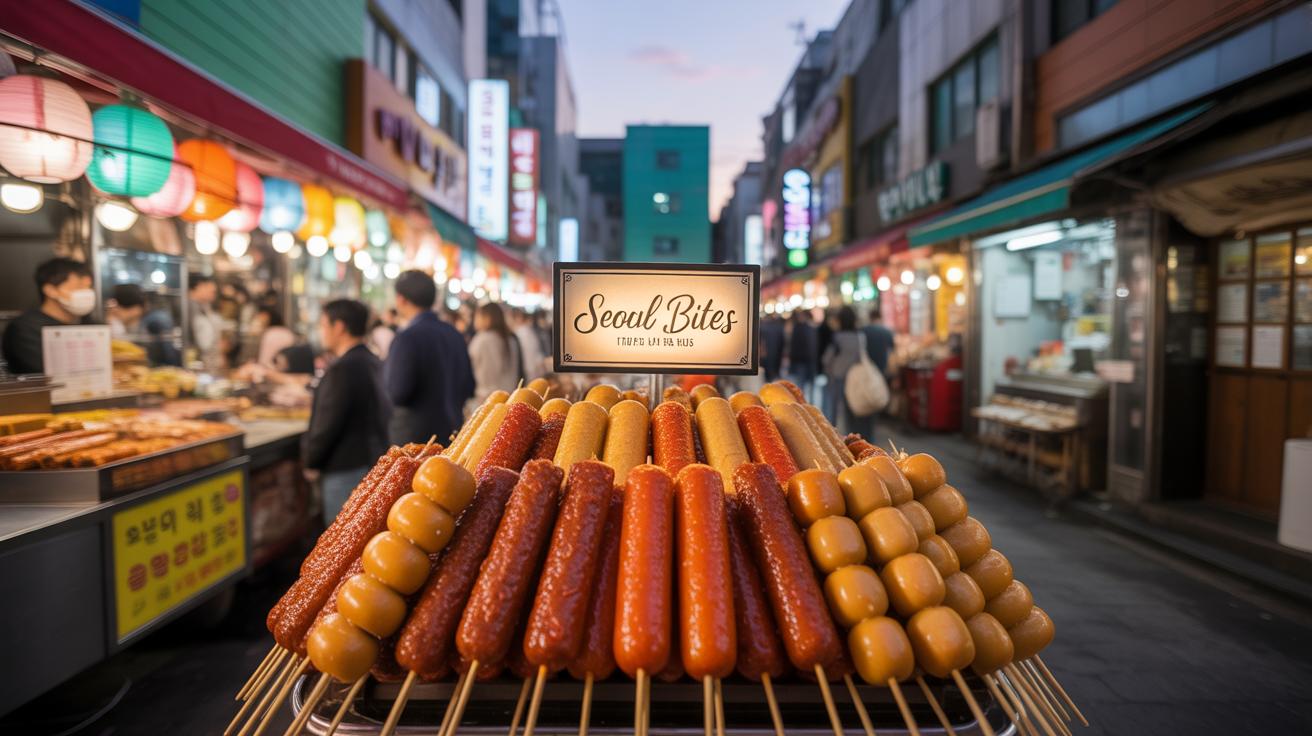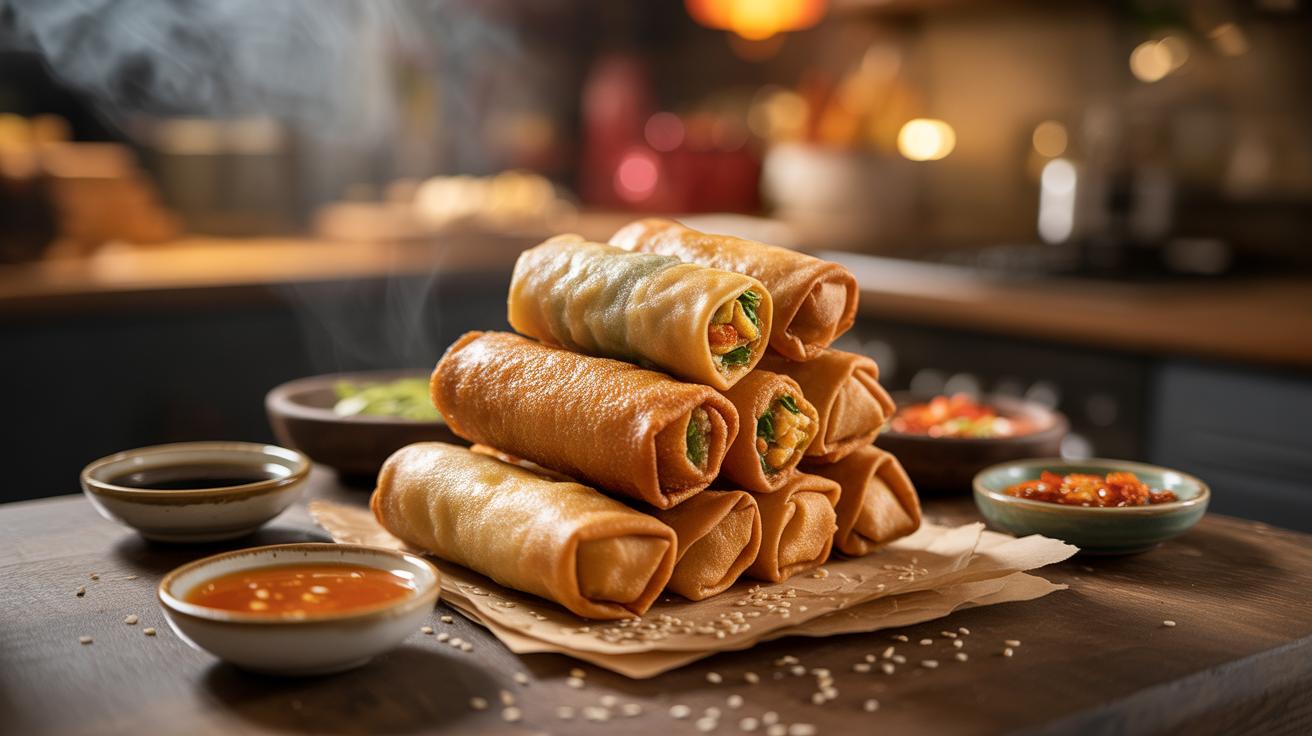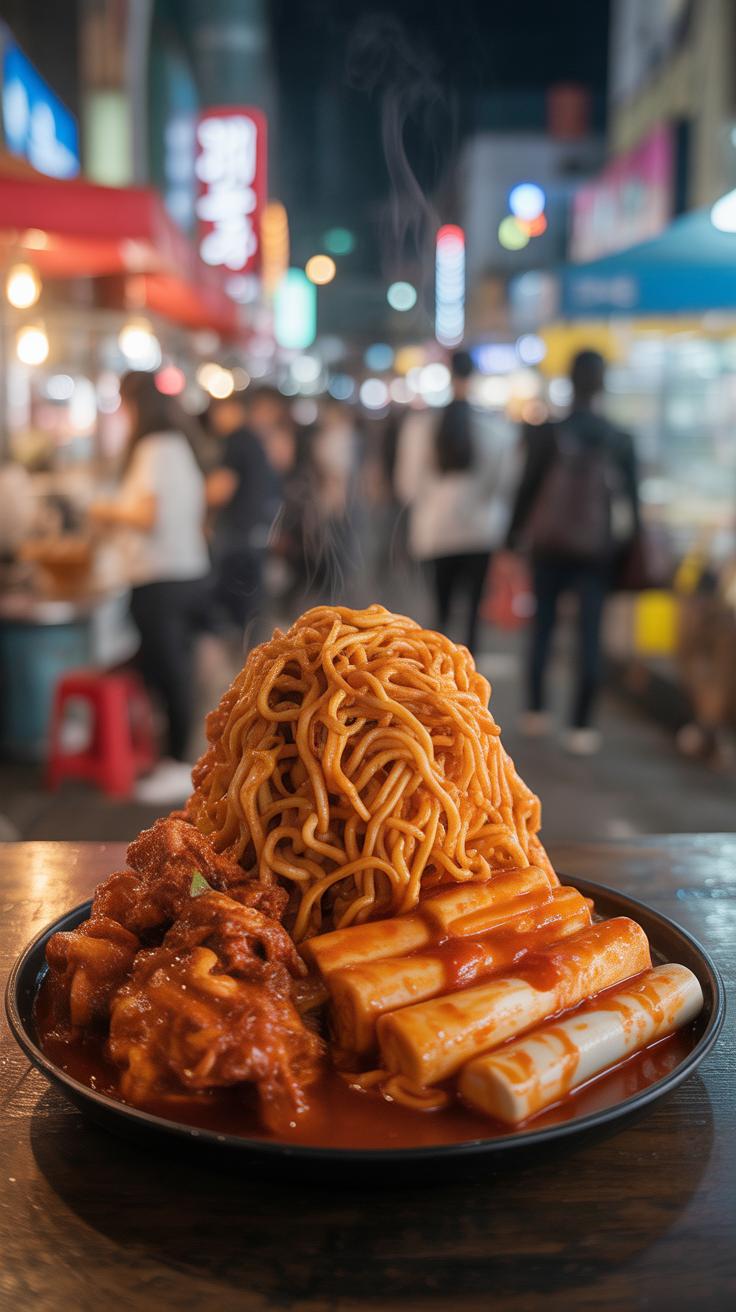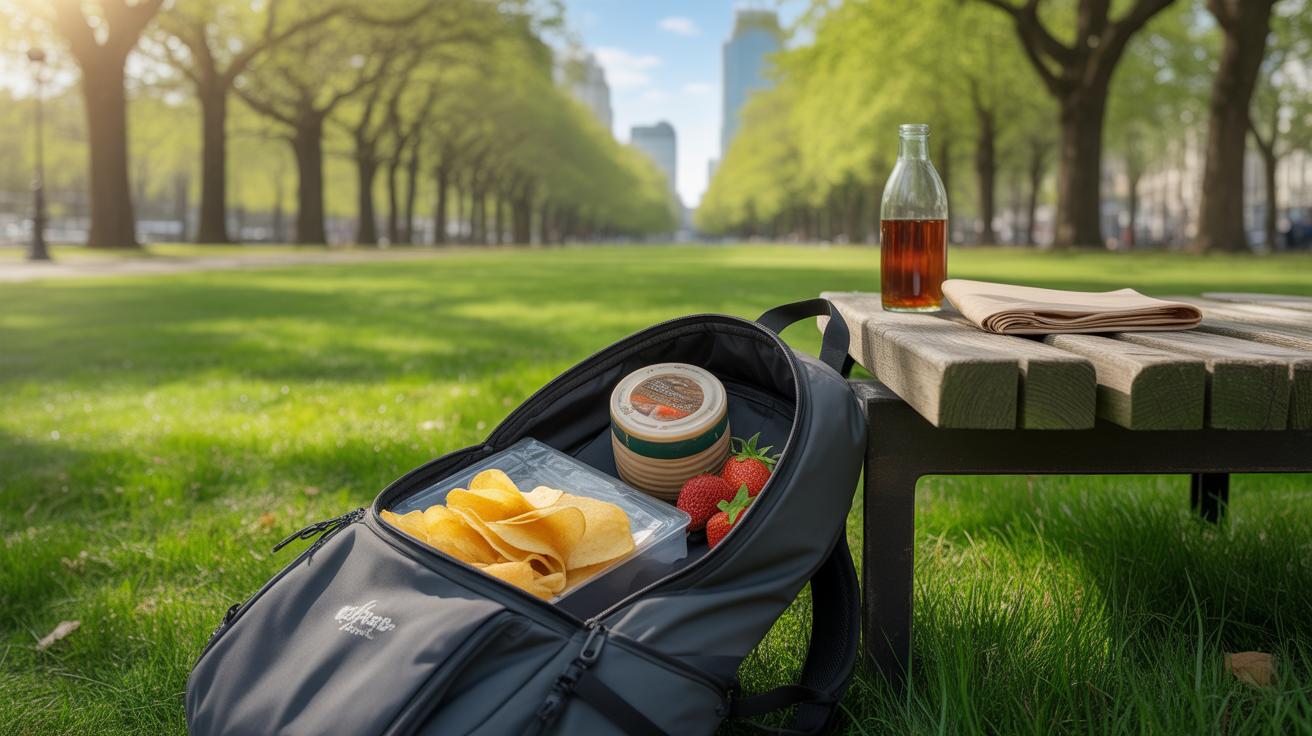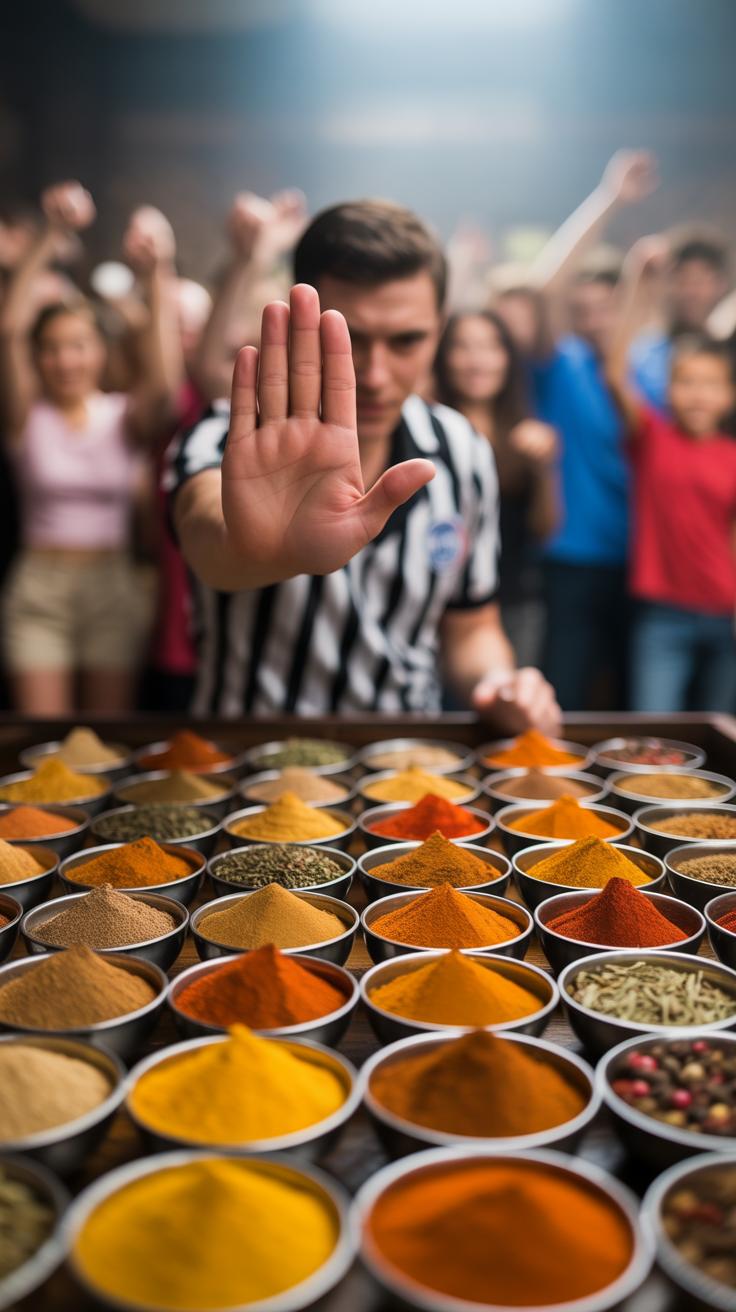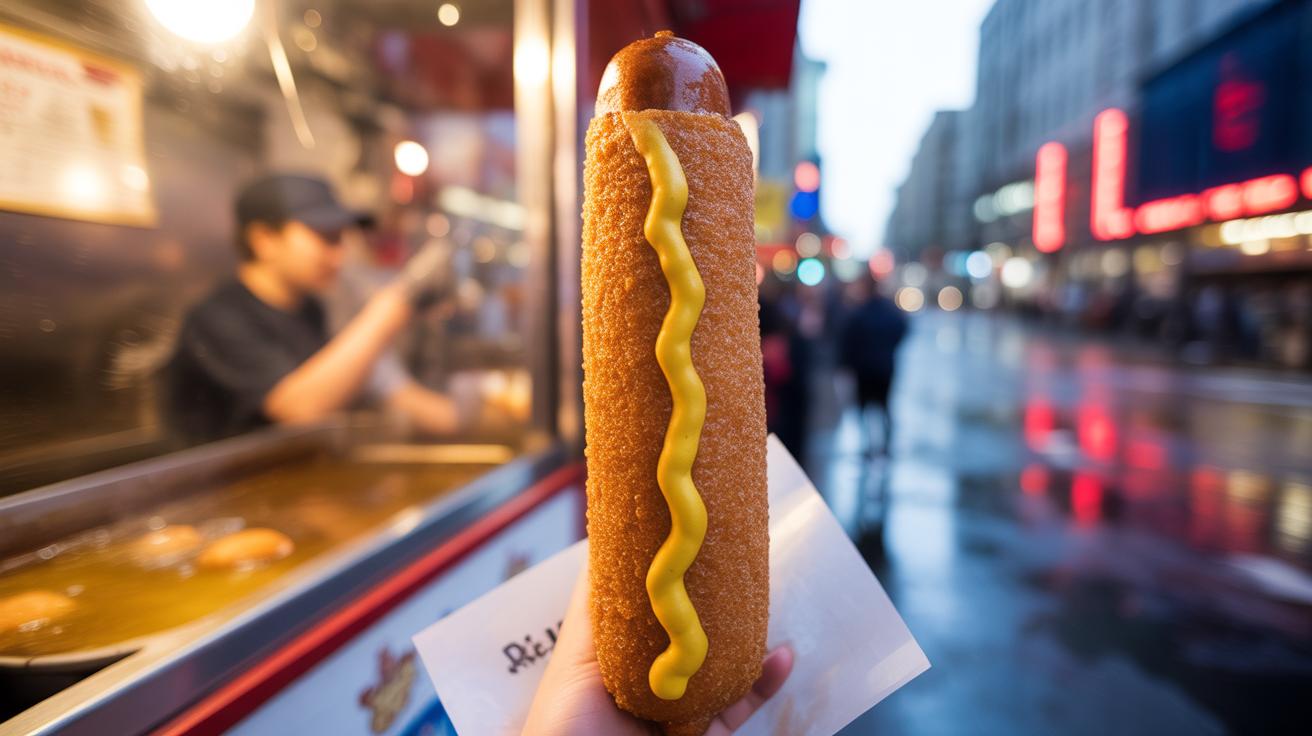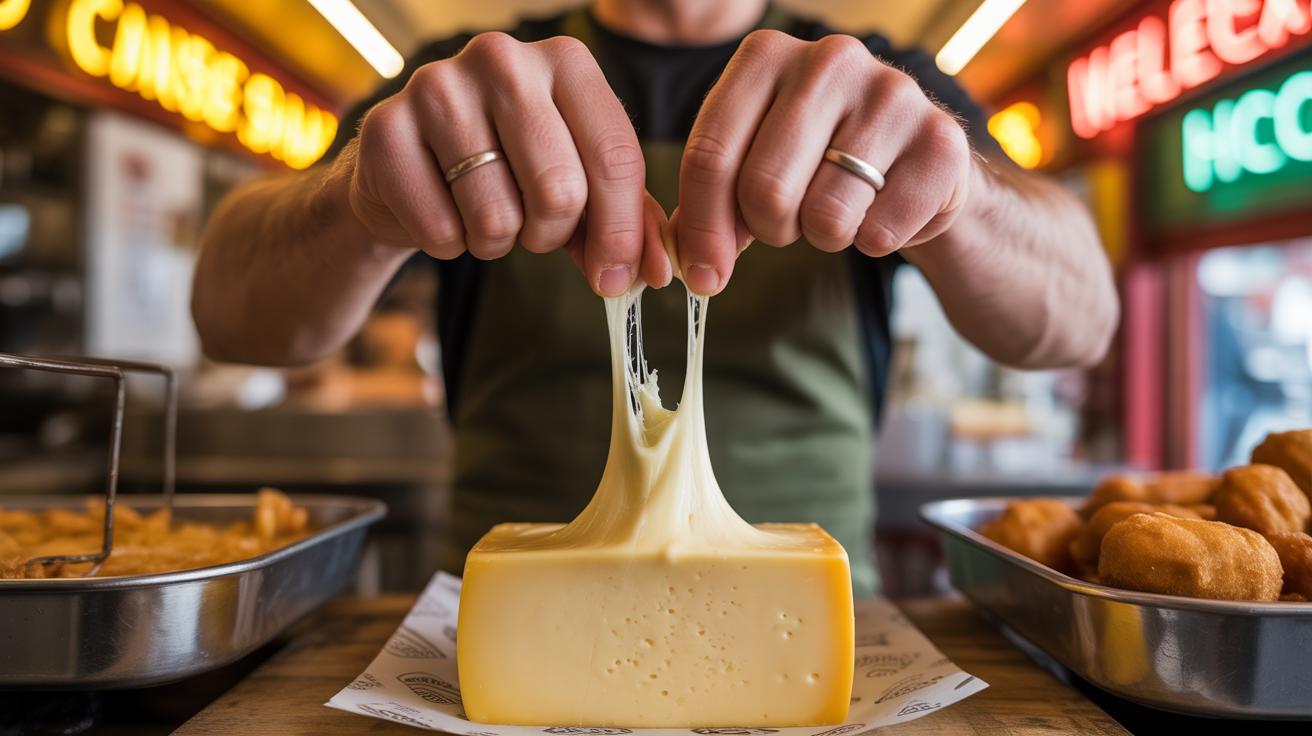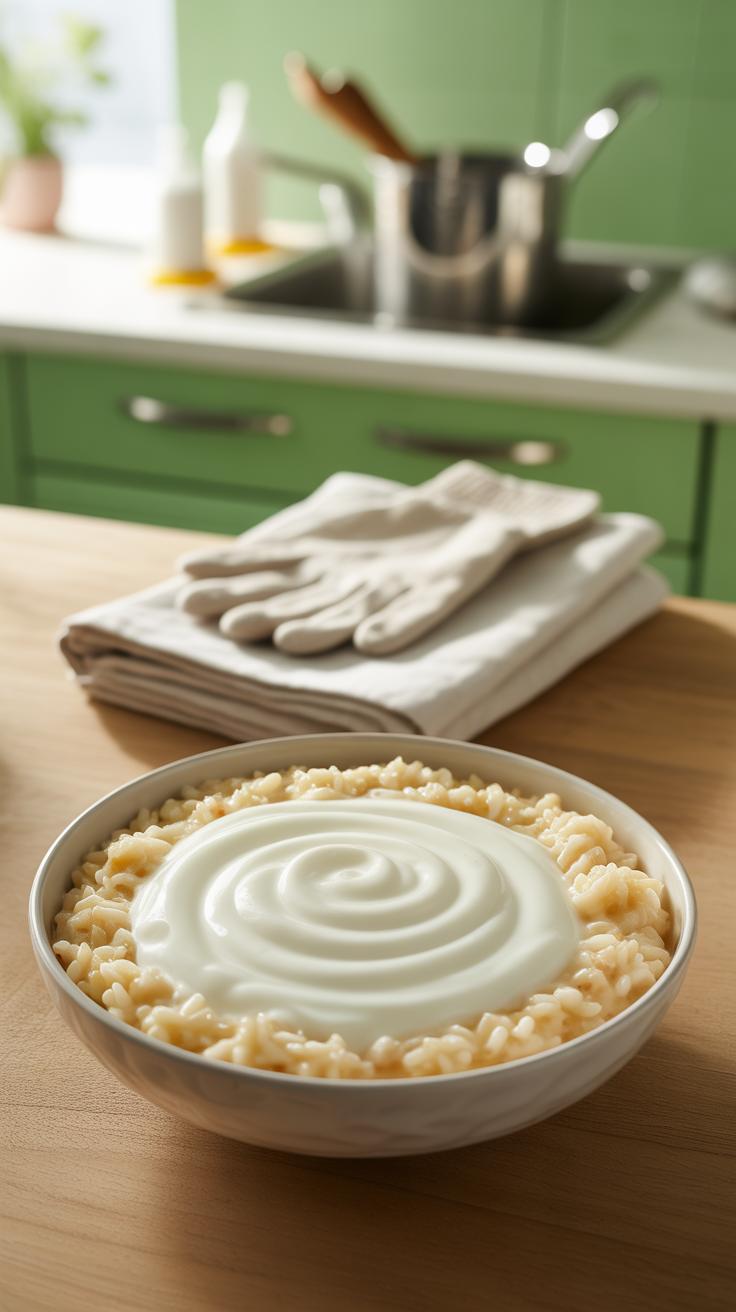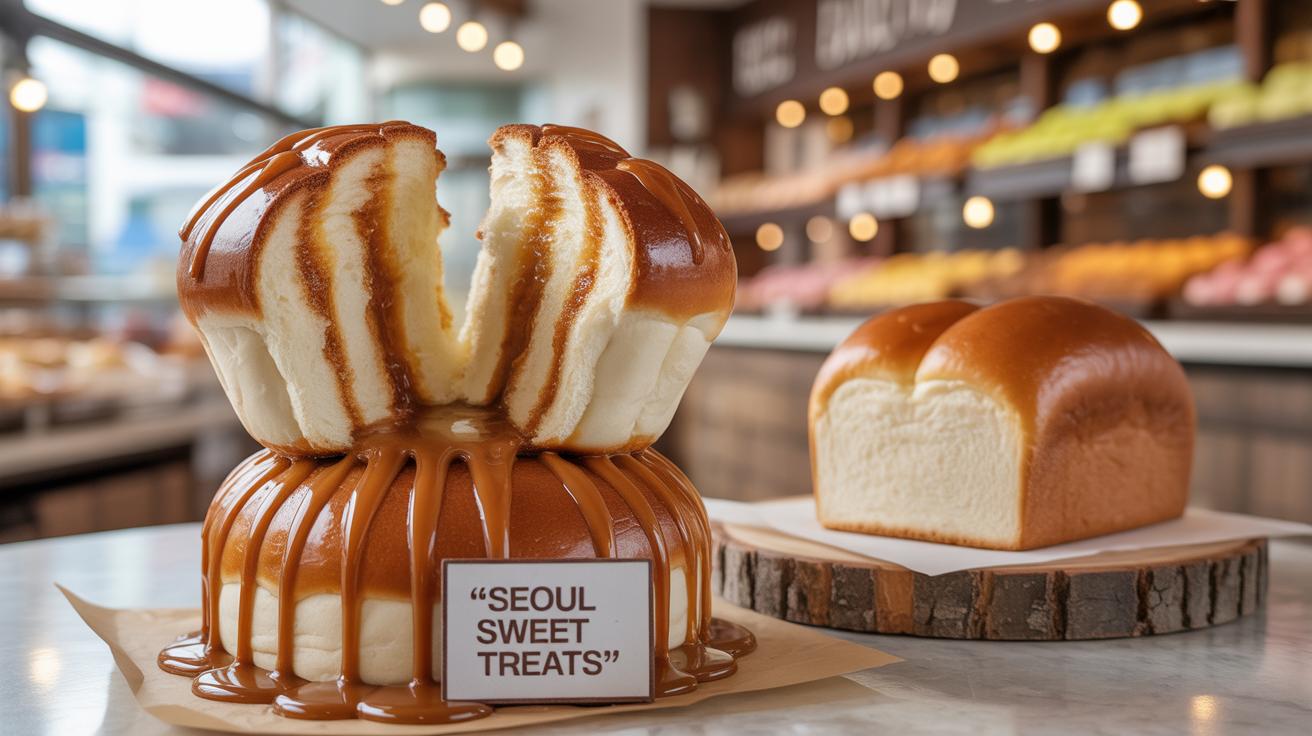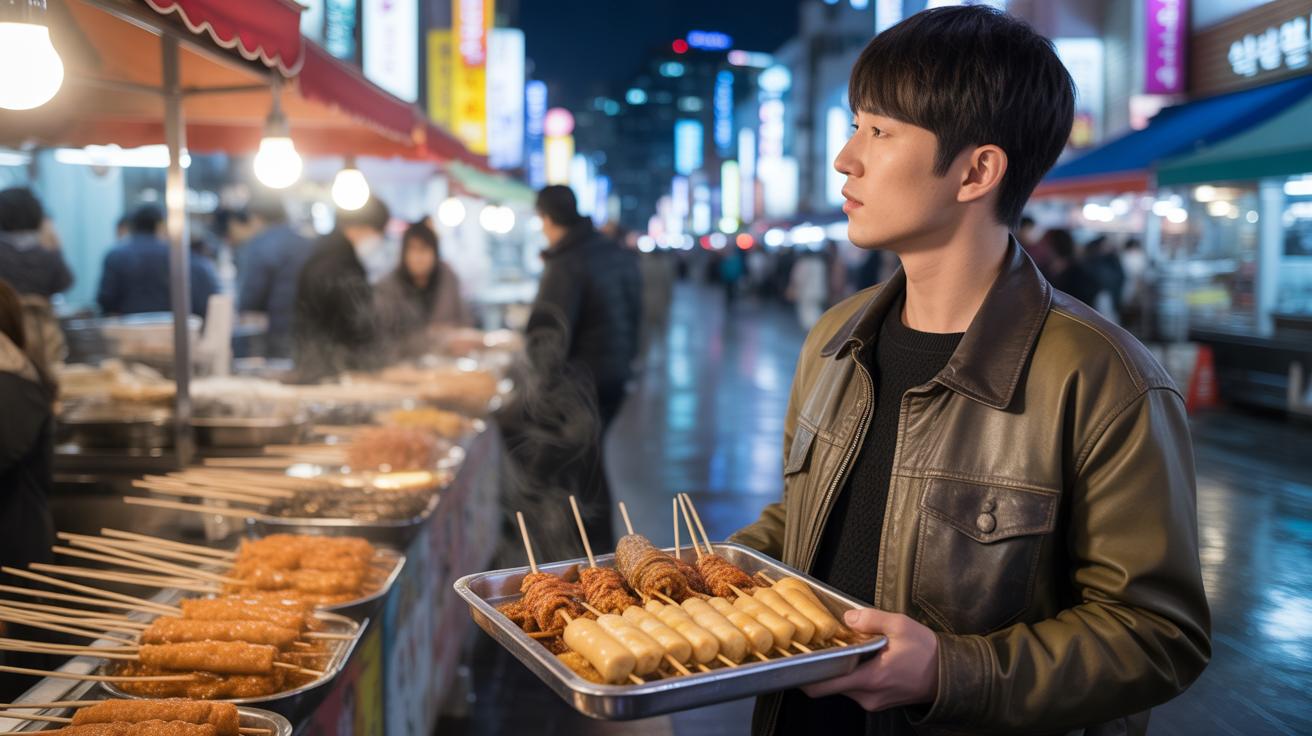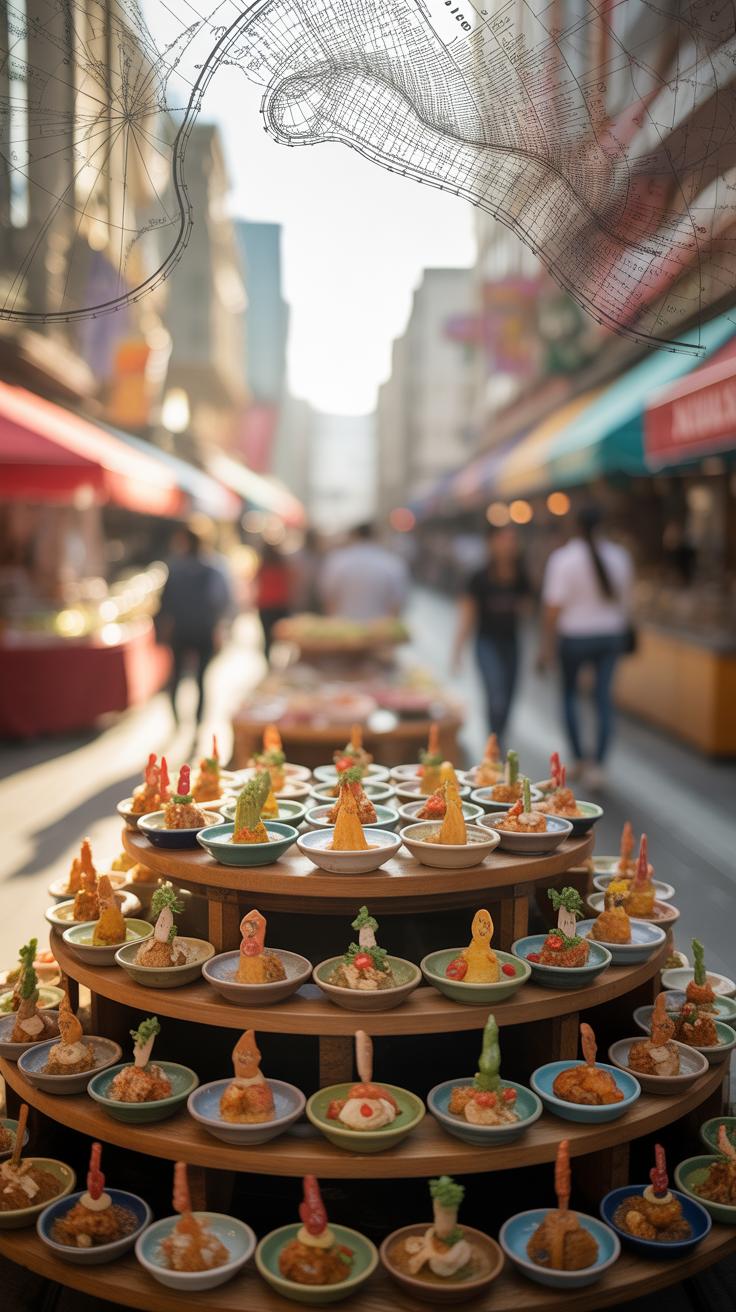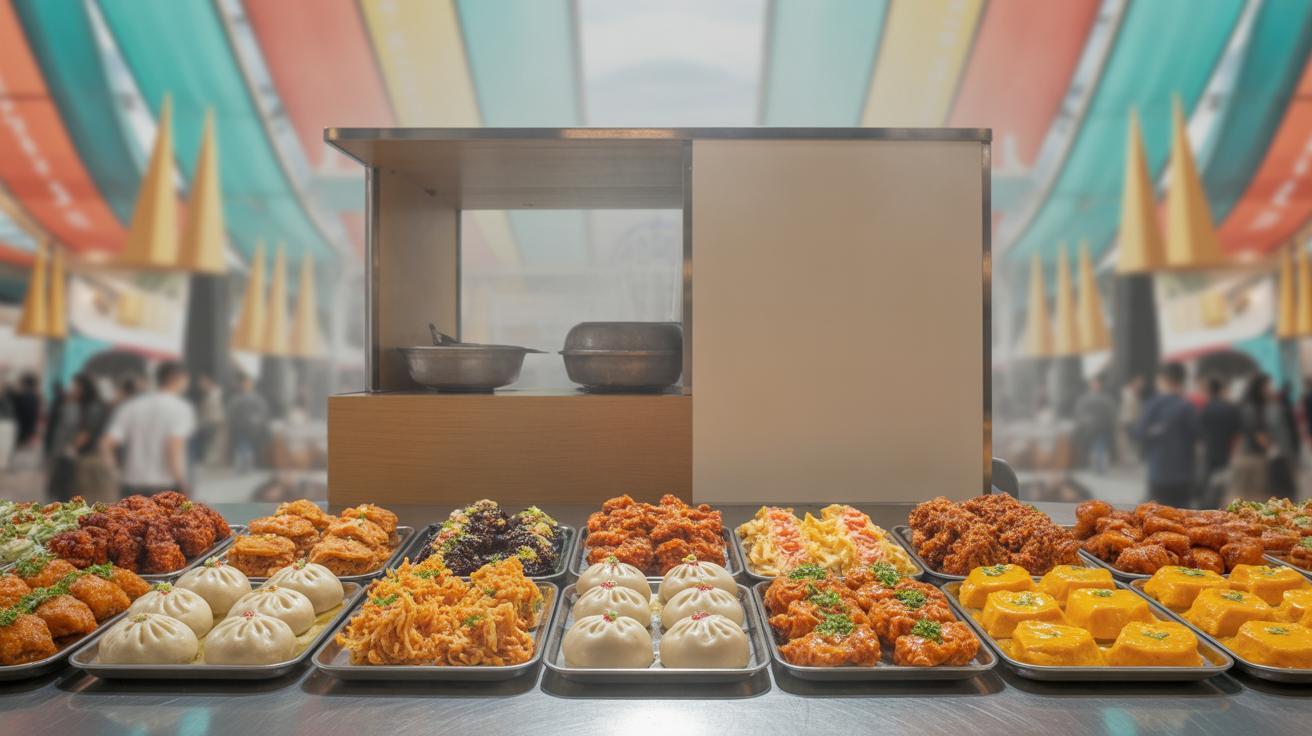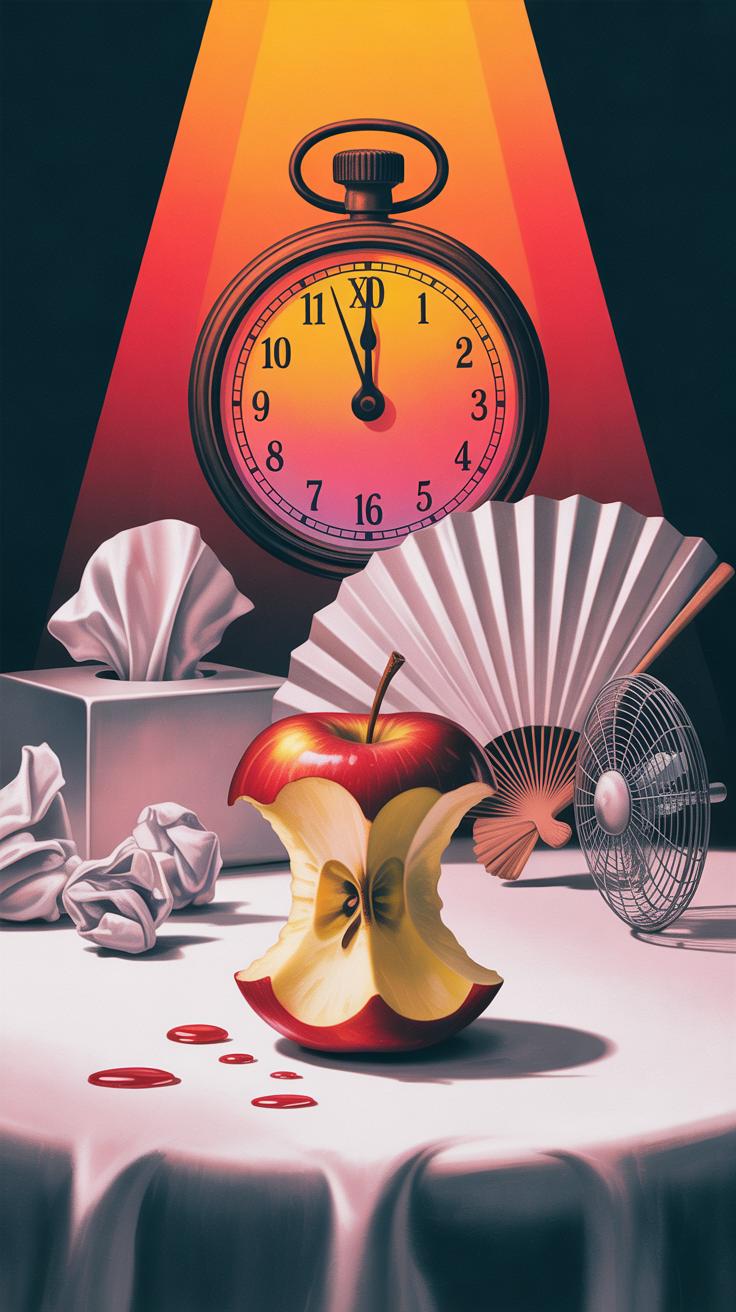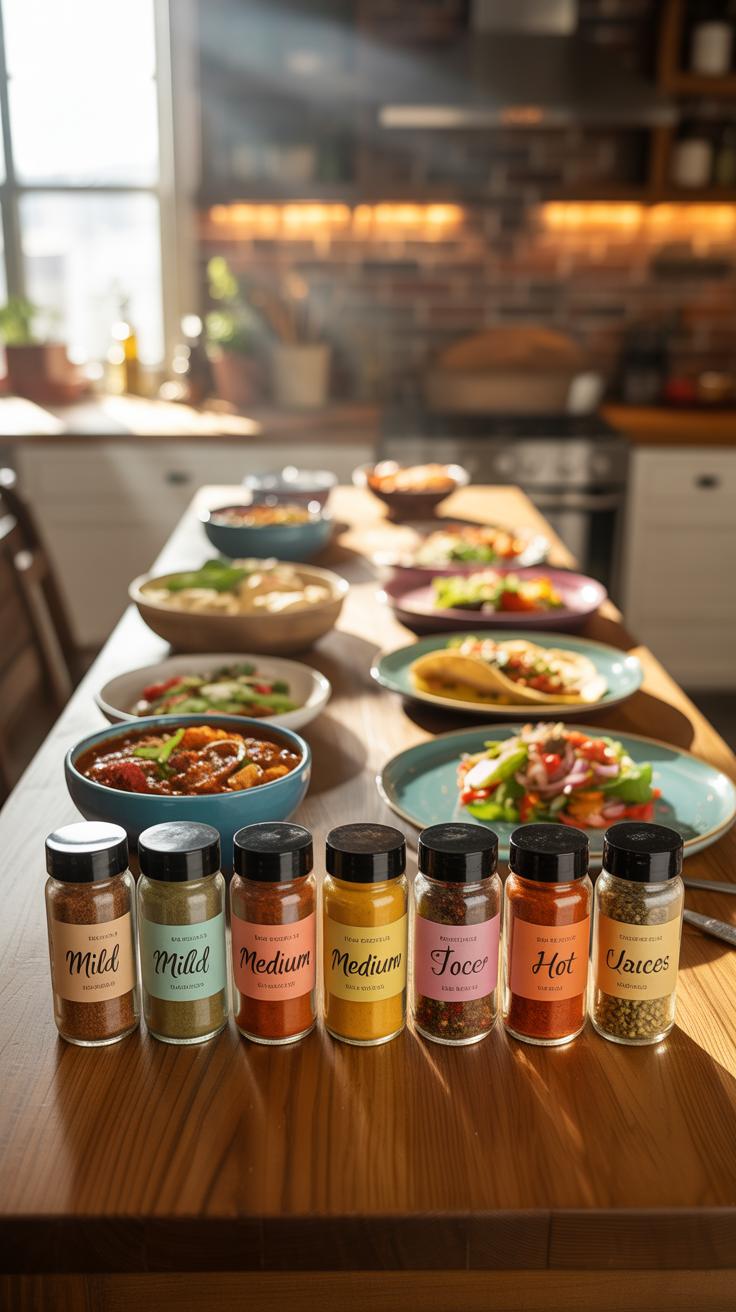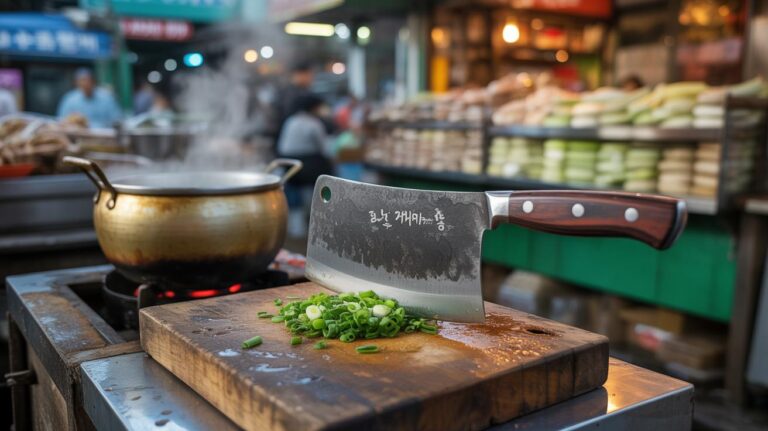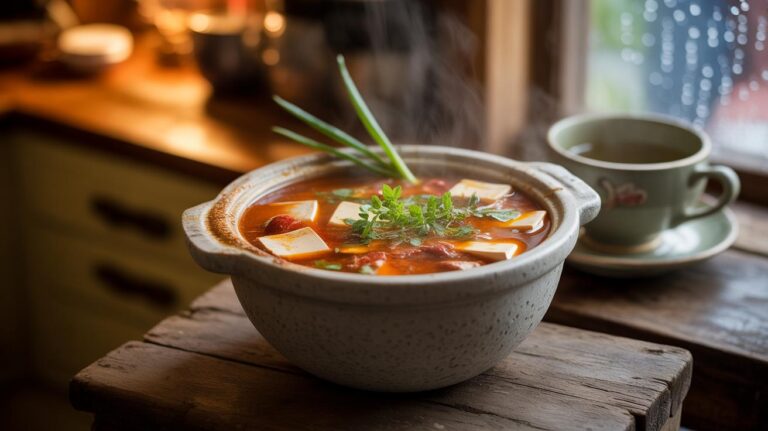Introduction
Spicy Korean food challenges are a fun way to test your taste buds and enjoy some delicious dishes. These challenges often feature the bold and fiery flavors Korea is known for. You don’t have to be a spice expert to try these challenges. They are designed so many people can attempt and enjoy them.
In this article, you will learn about popular spicy Korean dishes that are used in food challenges. You will also find helpful tips and ideas to help you finish the challenge. Whether you like mild spice or want to push your limits, this guide will help you find the right spicy Korean food challenge for you.
Introduction to Spicy Korean Cuisine
Spicy Korean cuisine centers around bold, intense flavors that often pack a punch. It’s not just about heat for heat’s sake. The spice works alongside savory, sweet, and fermented notes, creating dishes that feel complex and layered. If you’ve ever eaten Korean food, you might have noticed that the spiciness isn’t just sharp—it lingers, inviting you to keep going. That’s part of the reason why it makes such a compelling challenge.
The heat comes from key ingredients like gochujang, a fermented chili paste, and gochugaru, the red pepper flakes. Together, they lend not only heat but also a depth of flavor that’s hard to find elsewhere. Kimchi, too, plays a role—it’s spicy but also tangy and slightly sour from fermentation. These flavors combined create dishes that awaken your palate and test your limits.
Why are these dishes popular for challenges? Maybe because they’re accessible and widespread; many Koreans grow up eating spicy food, so the challenge is almost a cultural rite of passage. Plus, it’s not just about handling heat—it’s about resisting the craving to stop because the food tastes so engaging. Spicy Korean food challenges push you, but they also pull you in.
Key Ingredients in Spicy Korean Food
Some ingredients stand out in Korean spicy cuisine and define its flavor.
- Gochujang – This fermented red chili paste combines chili powder, glutinous rice, fermented soybeans, and salt. It’s thick, slightly sweet, and packs a mild heat. You find it in stews, sauces, and marinades. Without gochujang, many spicy Korean dishes wouldn’t hold their characteristic warmth and complexity.
- Gochugaru – These red pepper flakes aren’t just fiery; they have a smoky, slightly fruity aroma. They’re drier and sharper than gochujang, often sprinkled over dishes or mixed into broths to elevate spiciness without overwhelming other flavors.
- Kimchi – More than just a side dish, kimchi introduces fermented heat that’s tangy, sharp, and persistent. The spiciness here isn’t just chili-based—it has the depth of fermentation adding sourness and complexity. Because it’s a staple, kimchi is often central to spicy challenges as an extra layer of heat and texture.
These ingredients come together to create a distinctive flavor profile that’s hard to replicate in other cuisines. They balance heat with savoriness and sweetness in ways that can surprise even those used to spicy foods.
Why Spicy Korean Food Is Popular for Challenges
There’s something about spicy Korean food that makes it a natural fit for eating contests.
First, it’s a test of endurance. The heat builds, bites after bite, creating a slow burn that makes you question if you should stop—yet you often don’t want to. That pause between painful and pleasurable can be strangely addictive.
Culturally, spicy food is deeply woven into Korean social life. Sharing spicy dishes often involves communal eating, where everyone gets a taste of the heat. Taking on a spicy food challenge taps into this shared experience but zones in on the individual’s stamina and grit.
Also, spicy Korean dishes tend to be flavorful enough to keep you interested even when the heat overwhelms. Unlike some challenges that rely purely on extreme spice, the balance of flavors in Korean dishes means you often find yourself craving the next bite, despite the burn.
Do you think challenges based on flavor are easier to finish? Maybe. The complexity in Korean spicy food keeps your brain engaged—attacking the challenge becomes partly about savoring the dish, not just surviving it.
Famous Spicy Korean Dishes to Try
Tteokbokki and Its Spicy Kick
Tteokbokki is one of those dishes you’ll hear about whenever spicy Korean food is mentioned. It’s basically chewy rice cakes smothered in a thick, bright red sauce made from gochujang, the Korean chili paste. That sauce brings the heat—sometimes surprisingly intense—and it’s sticky enough to cling to each bite, which makes the spice linger longer than you might expect. Eating tteokbokki can feel like a slow burn that builds up steadily, catching some people off guard.
What makes the challenge interesting isn’t just the heat, but that sweet and savory kick balancing the spice. It’s tempting to keep going, even when your mouth protests. Many challenge versions crank up the chili paste or add dried chili flakes, pushing the heat well beyond what you’d find in a typical order. So, if you’re trying to finish a spicy tteokbokki plate, think about pacing yourself. It’s not about rushing; it’s about managing that creeping heat.
Spicy Korean Ramen Varieties
Spicy Korean ramen dishes come in many forms—each offering different levels of heat and flavor intensity. Some are simple bowls drenched in a fiery broth, while others come loaded with toppings like kimchi, sliced chilies, and even cheese to slightly tame the fire. A popular challenge ramen, like the “Buldak” or so-called “fire chicken” ramen, is infamous because of its almost overwhelming spice. It mixes hot chili powder and spicy flakes that can leave your tongue burning for minutes after finishing.
Then, there’s the “Instant Spicy Ramen Challenge,” where people push several packets of spicy seasoning into a single bowl. Heat levels can jump quickly—from mildly spicy to downright painful—so it’s a tricky dish to predict until you take the first bite. What surprised me once was how some ramen versions include ingredients that cool things down a bit, like soft boiled eggs or vegetables, offering brief relief in between mouthfuls. Maybe that’s why spicy ramen challenges can feel like an odd mix of torture and pleasure.
How Spicy Food Challenges Work
Common Rules and Setups for Spicy Korean Food Challenges
Most spicy Korean food challenges have simple rules, but don’t be fooled—they test more than just your heat tolerance. Typically, you need to finish the dish or series of dishes within a set time frame, often between 10 to 20 minutes. Some challenges require eating everything on your plate with no breaks. Others might let you pause but penalize you for taking too long.
Restaurants usually set up the challenge with a specific spicy meal, often an exaggerated version of a traditional dish you might have tried before. They might give you sauces that range from mildly spicy to nearly volcanic. The goal? To see if you can manage the heat and the volume, sometimes both.
Usually, if you succeed, there’s a reward—free food, your photo on a wall, or a small prize. If you don’t, you’re expected to pay. It can feel like a high-stakes but fun competition.
Types of Challenges You Might Encounter
Spicy Korean food challenges come mainly in three flavors:
- Timed Eating: Finish a spicy dish within a limited time, such as 15 minutes. The pressure builds, especially when the dish is as fiery as it is filling.
- Quantity Eating: Tackle a large volume of spicy food, like a massive bowl of fire noodle ramen or double-sized tteokbokki. Sometimes, there’s no time limit—just eat it all.
- Extreme Spice Level: These tests push your heat threshold, with sauces made from the hottest Korean peppers, like the Cheongyang or even ghost peppers. The dish can be moderate in size but overwhelmingly hot.
Some challenges blend these types, making each bite feel like a race against your own limits. You might win or you might quit halfway—but that’s part of the experience.
What to Expect in a Spicy Korean Food Challenge
From start to finish, expect a rollercoaster. At first, you’ll get a thrill when the dish arrives—steaming, red, and intimidating. The first few bites might feel manageable, even enjoyable if you like spice. After a minute or two, though, the heat kicks in sharply. Your mouth starts burning, eyes water, and sweat may break out.
You might find yourself pacing your eating, trying to push through or calm the burn with water, if allowed. Some people focus on finishing quickly to get it over with; others slow down, thinking it might help tolerate the pain. Midway can be the hardest—your stomach gets heavy, and the spice becomes relentless.
At the end, whether you finish or not, you’ll probably feel proud for trying. And maybe—just maybe—you learn a little about your own spice limits.
Preparing for a Spicy Korean Food Challenge
Getting ready for a spicy Korean food challenge takes more than just enthusiasm. Your body and mind both need some serious prep. Physically, you want to start by managing your digestion—don’t jump into these contests on a heavy or empty stomach. A balanced meal a couple of hours before usually works best, but some people prefer a light snack. You might feel tempted to dive straight into super spicy foods, but pacing yourself early on is key.
Building up your spice tolerance isn’t about forcing through pain. It’s about gradual exposure, maybe starting with milder chilies or Korean dishes with less red pepper paste (gochujang) or powder (gochugaru). This step-by-step approach allows your taste buds and stomach to adapt without outrage. Think of it as a slow climb rather than a sprint. For example, if you can barely stand a little heat now, try adding just a bit of spicy kimchi or a few red pepper flakes to your meals over a week or two.
Mental preparation is just as crucial. Staying focused amid the burn is no joke. Try techniques like deep breathing or short mindfulness exercises before and even during the challenge. It can feel counterintuitive to calm down when your mouth feels like it’s on fire, but shifting your focus away from the pain helps. Motivation also plays a big role—remind yourself why you’re doing this. Is it for fun, pride, or the thrill? Having a clear ‘why’ can carry you through moments when you’re ready to quit.
One weird thing I’ve noticed is how much mindset can change the experience. Sometimes, just joking with friends or thinking of a distraction makes you handle the heat better. But other times, anticipating the worst can make you tense and less tolerant. You might not be able to control everything, but a little mental training goes a long way.
Eating Techniques for Spicy Challenges
Managing the heat of spicy Korean food challenges often comes down to *how* you eat, not just *what* you eat. Controlling your eating pace can make a big difference. If you rush through the dish, the capsaicin—the compound that makes chili peppers spicy—builds up quickly, overwhelming your senses. Slowing down lets your mouth adjust bit by bit, giving your nerves a chance to recover. It’s almost like pacing a race; sudden bursts rarely end well.
Another useful strategy is timing your bites carefully. Some people prefer smaller bites spaced out over time, while others might mix in bites with less spicy parts of the dish. Either way, not diving in headfirst every time reduces the shock of the heat. Listening to your body while balancing speed feels a little tricky but can keep the spice bearable longer.
Besides pacing, incorporating cooling foods is key. Milk is a classic for good reason—it contains casein, a protein that helps wash away the burning sensation better than water. Plain white rice also works well, acting like a sponge soaking up some of the heat and giving your palate a moment of relief. You can even find yourself alternating between spoonfuls of rice and spicy bites, which oddly helps keep the fire manageable.
What about pickled radish or cucumber? These often come with spicy meals and can offer a refreshing break, although their effect is mild compared to dairy or starch. Even if you don’t want to slow down too much, having these on hand for quick pauses makes a difference.
So, when tackling a spicy Korean food challenge, think about moderating your speed and having cooling allies nearby. It’s not just about endurance but about strategy—how you rotate bites and cool down might decide if you finish or give up halfway through. Ever noticed how some people can eat fiery dishes nearly effortlessly? It’s often because they’ve figured out these little tricks. Why not try them next time you face the heat?
Top Spicy Korean Food Challenge Spots
Restaurants Known for Spicy Food Challenges
If you want to try spicy Korean food challenges, there are spots that draw crowds eager to test their heat tolerance. Places like Buldak Alley in Seoul are popular for fiery chicken dishes, especially the “Fire Chicken Challenge,” where the heat level can push you to the brink. Another well-known spot is Myungrang Hot Dog, which isn’t just about spicy corn dogs but hosts contests featuring extremely spicy sauces.
Then there’s Masizzim, which offers the notorious “Volcano Ramen” challenge. People come here expecting a bowl that can seriously test your grit. I think what makes Masizzim a favorite is the blend of spice and flavor—it’s not just hot for the sake of being hot.
Also, places like Hongdae’s “Spicy Ramen Spot” attract those wanting to compete in finishing ultra-spicy noodles within a time limit. Each of these restaurants has a loyal following, partly because the challenges are known to be daunting yet fun.
What to Expect at These Challenge Venues
When you walk into these challenge venues, the atmosphere is usually buzzing. You might see posters or chalkboards advertising their spicy challenge, complete with the rules printed clearly. Rules often include finishing the dish within a certain timeframe, no drinks allowed during the eating time, or sometimes even no breaks. The stakes? Sometimes it’s a free meal or your photo on the wall, and other times just bragging rights.
The settings can be casual or a bit intense, with both locals and tourists drawn in by the thrill. Staff usually explain the challenge rules upfront, and it’s common for them to warn you about the heat level. Some spots even have microphones, encouraging cheers or playful heckling. These places are not just about food but the whole experience.
It’s a bit of a mix—some might feel supportive, others a little high-pressure. But if you’re prepared and curious, you’ll find these venues welcoming you into their spicy world, inviting you to test your limits in a surprisingly friendly way.
Benefits of Taking on Spicy Korean Food Challenges
Trying spicy Korean food challenges isn’t just about testing how much heat you can handle. There’s an unexpected amount of fun involved, especially when you share the experience with others. The competitive side kicks in naturally—whether you’re keeping pace with friends or aiming to beat the clock, it adds a lively edge to the meal. Plus, the intense flavors make the experience memorable, showing a side of Korean cuisine that’s bold without losing its depth.
These challenges are a way to connect with Korean culture directly through food. You get to experience the heat that Koreans often appreciate and understand the balance of spice with other tastes, like sweetness or umami. It’s almost like a crash course in flavor profiles rooted in tradition. You don’t just eat; you’re learning, maybe without realizing it, about how food ties into celebrations, daily life, and even social bonding there.
On a personal level, finishing a spicy challenge can leave you with a surprising boost in confidence. There’s something satisfying in overcoming the burn and pushing past discomfort. It’s not just about the food—it’s about proving to yourself you can handle more than you thought. That feeling sticks with you. Maybe the challenge is about heat for some, but it becomes a story of personal achievement for others. It might even spark a bit of curiosity about what else you can tackle.
Common Mistakes to Avoid in Spicy Challenges
Ignoring Your Spice Limit
Jumping into a spicy Korean food challenge without knowing your tolerance is tempting but rarely wise. You might think pushing past your limit quickly shows strength or commitment, but it can backfire. Going too hot too fast can overwhelm your senses, making it almost impossible to continue. Not to mention, your body reacts harshly—sweating, stomach discomfort, or even nausea. I’ve seen people stop halfway simply because they didn’t respect their heat threshold.
Knowing your personal spice boundary lets you pace yourself better. It’s okay to acknowledge where you struggle—it doesn’t mean you’re less capable. If you’re cautious and deliberate, your chances of actually finishing improve a lot. After all, is rushing worth all the punishment your body faces? Probably not.
Skipping Preparation and Strategy
Approaching a challenge without a plan is like walking into battle blindfolded. You need more than just willpower to survive the fiery gauntlet of Korean spice. Not strategizing means you might run out of steam early, choke on intense flavors, or miss out on small tricks that can keep you going—like eating rice between bites or taking small sips of milk or water.
Preparation isn’t just about tactics either. Familiarizing yourself with the dish’s ingredients or testing milder versions beforehand helps your palate adjust. Someone once told me they tried a challenge on a whim and paid the price with hours of discomfort afterward. Taking the time to plan is worth it—without a strategy, even the most confident can falter.
What to Do After Finishing a Spicy Challenge
Immediate Aftercare Tips
Right after conquering a spicy Korean food challenge, your mouth might feel like it’s still on fire and your stomach could be a bit unsettled. The first move? Reach for something dairy—milk or yogurt is your best bet. The fat in dairy helps neutralize capsaicin, the compound causing that burning sensation. Water? Not so much. It spreads the heat instead of cooling it down.
Another trick that can help is eating a piece of bread or some rice. These bland foods absorb some of the spice remnants in your mouth, creating a calmer palette. I once tried just rinsing with water and ended up regretting it.
If your stomach feels uneasy, sipping on ginger tea or lemon water might soothe it. These natural remedies can reduce irritation and help digestion without overwhelming your system more.
Celebrating Your Achievement
Finishing that spicy bowl isn’t just about surviving; it’s a win. You tackled something tough, and that’s worth marking. You might want to share your success with friends or snap a quick photo before you cool down—it’s part of the fun, even if it’s a bit cheesy.
Celebrations don’t have to be extravagant. Some like to treat themselves to a sweet dessert, which can balance out the lingering heat and reward your effort. Others prefer relaxing with a cold drink or a walk to clear their head.
Why celebrate? Because it turns the challenge into a memory and a story you can tell. Plus, acknowledging your little victory can make you more willing to try spicy foods again—or push your limits one day. So, give yourself a moment. You earned it.
Making Your Own Spicy Korean Food Challenge
Choosing the Right Dishes and Spices
Picking the right dishes for your spicy Korean food challenge is trickier than it seems. You want something that’s spicy enough to test your limits but still enjoyable to eat. Think about classics like tteokbokki or spicy ramyeon. They have familiar textures and flavors, which helps keep your focus on the heat rather than feeling uncomfortable with unknown tastes.
When picking spices, go for gochugaru or gochujang as your base since they define Korean spice but vary in intensity. You might want to start with moderate levels and work your way up with extra chili flakes or a dollop of hot pepper paste. It’s tempting to jump straight to the hottest chili powder—you know, to impress your friends—but you can burn out fast and it won’t be fun for anyone.
Try customizing the spice gradually. Maybe a few rounds of the same dish with incrementally more heat. It’s like… layering the challenge rather than jumping off a cliff. Keeps everyone engaged, too.
Setting Rules and Safety Tips
Rules make things more fun and safe but don’t overcomplicate them. Something simple—finish the dish within a time limit, no water allowed till the end—can add tension. But always remind folks to listen to their bodies. If anyone feels dizzy or really overwhelmed, stepping out is okay; it doesn’t mean you lost the challenge.
Safety-wise, have milk or yogurt nearby. Those do a better job calming the burn than water. And keep some bread or rice handy—it helps soak up the spice and keeps things balanced. Also, don’t rush—eat slowly and pace yourself. It’s tempting to get it over with fast, but burning out too soon doesn’t feel great, right?
One thing I’ve noticed—having friends join the challenge brings quick support and laughs. That shared experience can lighten the heat, even if the spice stays fierce. So, create a relaxed vibe, and let the challenge be about fun more than just toughness.
Conclusions
Spicy Korean food challenges offer a chance to experience unique flavors and test how much heat you can handle. They are not just about eating spicy food but enjoying the rich taste of Korean cuisine. By understanding the types of dishes and using helpful strategies, you can increase your chance of finishing the challenge.
Remember to start with dishes that fit your spice level and use the tips discussed to manage the heat. This way, you will have fun and maybe even discover a new favorite spicy Korean meal. Give it a try, and see how far your taste buds can go.

